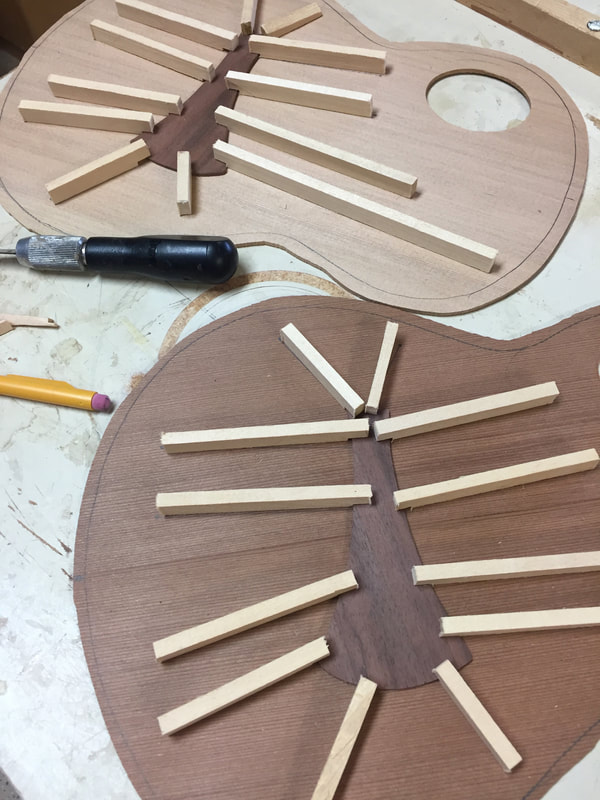There was no right or wrong. Either choice was beautiful- but I finally chose option #2. Here it is, flanked by the sides.
And, by the way, if you saw yesterdays blog-this will be the sound board. I count an average of 50 growth rings per inch. Think of it, it took this huge Cedar tree 50 long years to grow one inch in width. The earth must have been much colder then.
This is going to be a wild looking ukulele. Jon Dale, my friend in PA. has offered to send me some more Sycamore, so if this tenor sounds as exciting as it will look, maybe next time I will reverse the pattern.
With each application of French Polish, the bear claw marks on the Sitka Spruce soundboard of #118 become more distinct. The boys at Pacific Rim Tonewoods that supplied this lovely Sitka tell me that bear claw is considered superior wood because of its greater stiffness I love it for its looks.
Here is the Bubinga backside of Lee's tenor. It is really beginning to glow.
The next challenge is to rout the groove for the "rope" purfling that will surround the sound hole. Then bend it on the hot pipe and glue it into the groove.
I will cut out the sound hole once the glue has dried. I have found it better to cut that hole by hand and true it up with a Dremel sanding disc carefully following the pencil lines.
And now it is time to fit a new blade in the Exacto knife and start whittling. Each instrument gets twelve thin and shaped tone bars. These are all cut to length and notched on the table saw to fit over and be glued to the walnut bridge patch.










